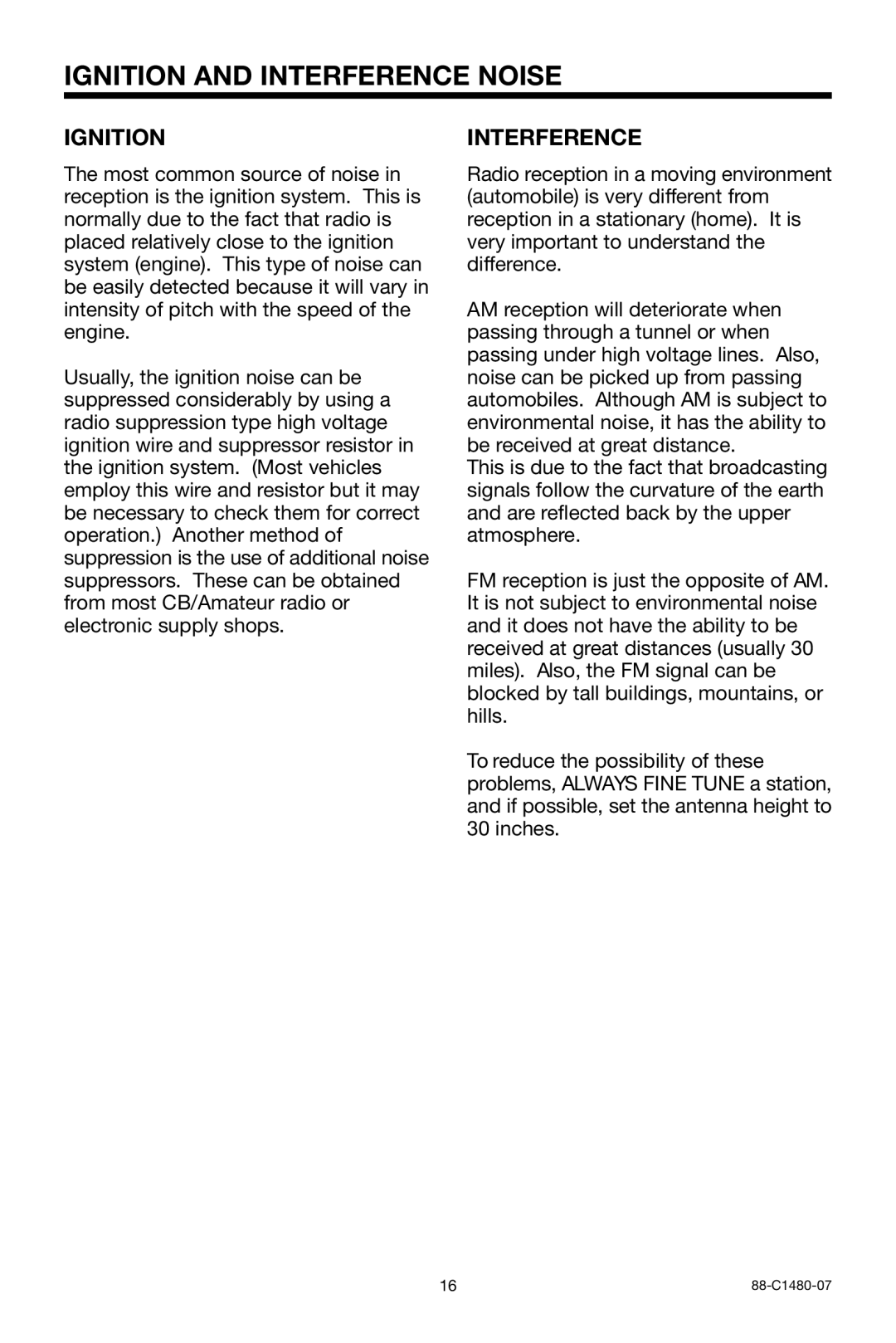IGNITION AND INTERFERENCE NOISE
IGNITION
The most common source of noise in reception is the ignition system. This is normally due to the fact that radio is placed relatively close to the ignition system (engine). This type of noise can be easily detected because it will vary in intensity of pitch with the speed of the engine.
Usually, the ignition noise can be suppressed considerably by using a radio suppression type high voltage ignition wire and suppressor resistor in the ignition system. (Most vehicles employ this wire and resistor but it may be necessary to check them for correct operation.) Another method of suppression is the use of additional noise suppressors. These can be obtained from most CB/Amateur radio or electronic supply shops.
INTERFERENCE
Radio reception in a moving environment (automobile) is very different from reception in a stationary (home). It is very important to understand the difference.
AM reception will deteriorate when passing through a tunnel or when passing under high voltage lines. Also, noise can be picked up from passing automobiles. Although AM is subject to environmental noise, it has the ability to be received at great distance.
This is due to the fact that broadcasting signals follow the curvature of the earth and are reflected back by the upper atmosphere.
FM reception is just the opposite of AM. It is not subject to environmental noise and it does not have the ability to be received at great distances (usually 30 miles). Also, the FM signal can be blocked by tall buildings, mountains, or hills.
To reduce the possibility of these problems, ALWAYS FINE TUNE a station, and if possible, set the antenna height to 30 inches.
16 |
